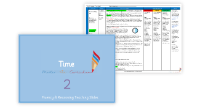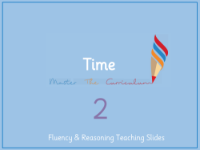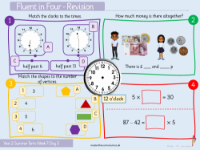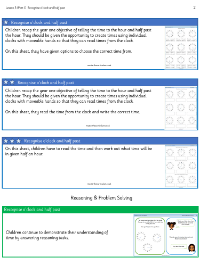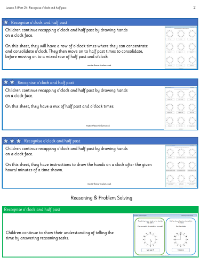Time - O'clock and half past - Planning
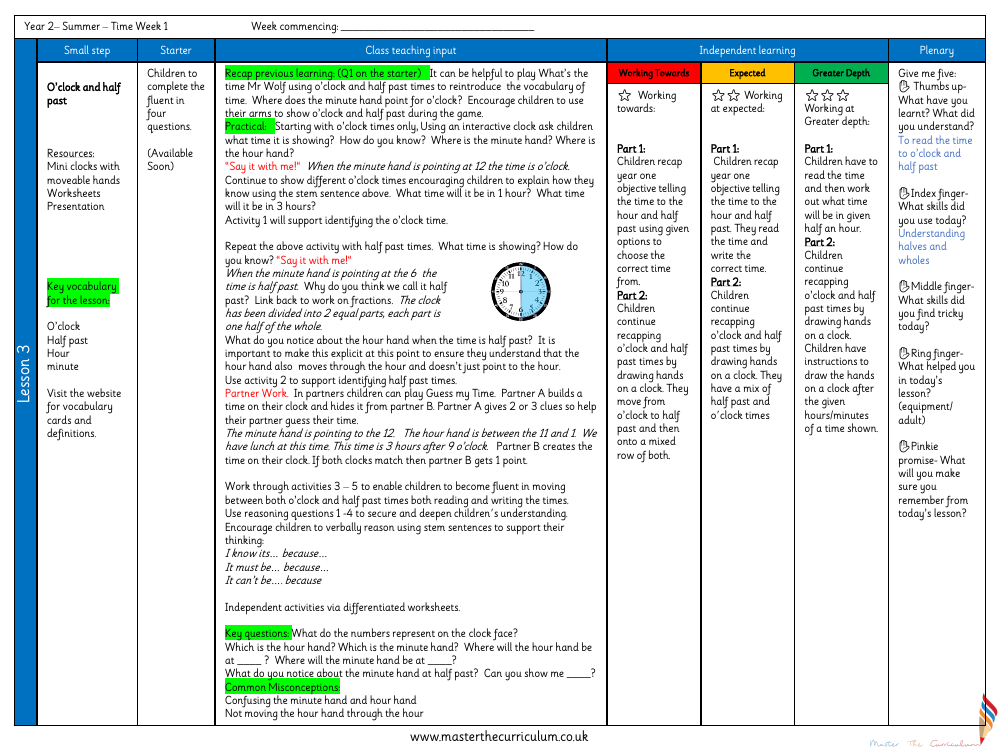
Maths Resource Description
The Year 2 summer term lesson on time focuses on teaching children to tell the time at 'o'clock' and 'half past' using interactive methods and practical resources. The lesson starts with a recap of previous learning, which can involve a playful game of 'What's the Time Mr Wolf?' to reinforce the vocabulary related to time. Children are encouraged to use their arms to mimic the positions of the clock hands for 'o'clock' and 'half past' times. Using mini clocks with moveable hands, the class is guided through identifying 'o'clock' times by observing the positions of the minute and hour hands, and they are encouraged to articulate their understanding using specific sentence stems. The lesson progresses to focus on 'half past' times, linking the concept to halves in fractions, and helping children to notice the position of the hour hand as it moves through the hour. Various activities, including partner games like 'Guess my Time' and differentiated worksheets, help students to practice and become fluent in reading and writing both 'o'clock' and 'half past' times.
Throughout the lesson, key questions prompt students to consider the function of the numbers on the clock face, the distinction between hour and minute hands, and the specific positions of these hands at given times. The lesson is structured to address common misconceptions, such as confusing the minute and hour hands or not accounting for the movement of the hour hand. A plenary session encourages students to reflect on what they've learned, the skills they've used, and what they found challenging, ensuring they remember the key points of the lesson. The lesson plan also includes differentiated learning objectives, ranging from recapping basic time-telling skills to more advanced exercises that involve calculating time half an hour ahead. This structured approach caters to varying levels of understanding, from working towards expected standards to achieving greater depth in time-telling proficiency.

